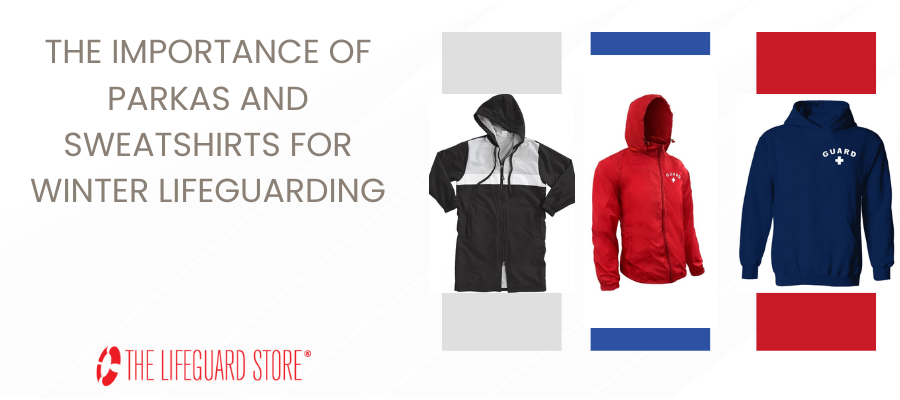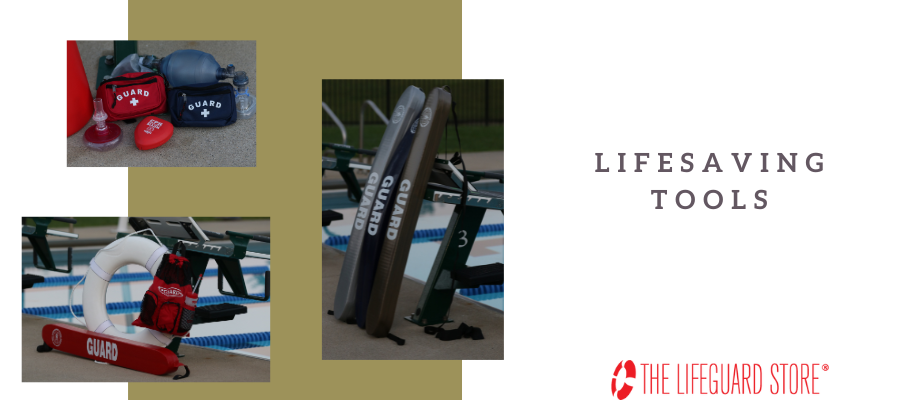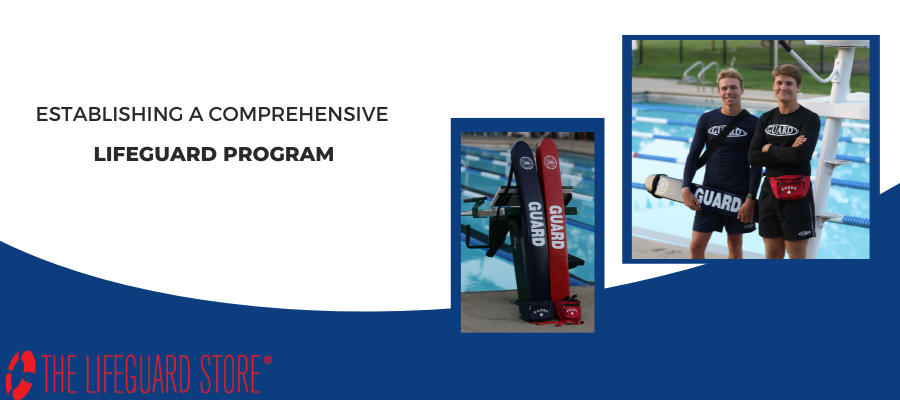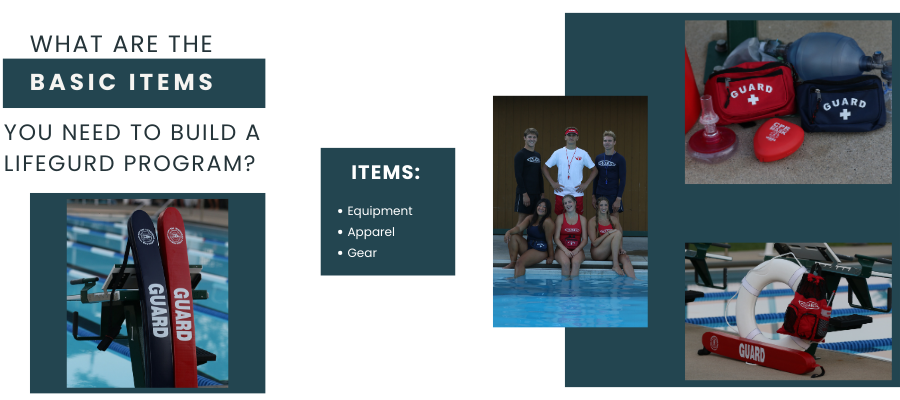Common Heat Related Illness and How to Help


While relaxing by the pool or at the beach on hot summer days is a must-do summer activity for many, exposure to extreme heat and the sun is dangerous for everyone. Anyone who is exposed to abnormal or prolonged amounts of heat and humidity, without proper fluid intake or relief, is at risk of suffering a heat-related illness. While most of these illnesses are uncomfortable and temporary, more severe cases can result in permanent injury and even death. Knowing how to prevent and treat heat-related illnesses is essential for protecting yourself and your patrons.
When the human body is exposed to more heat than it can effectively disperse, it begins to display symptoms ranging from rashes, cramps and dizziness to fainting, coma and even death.
When your body can’t cool itself down, your temperature quickly rises, and you can become very ill. Since 31 percent of heat-related deaths are attributed to exposure to excessive natural heat, outdoor pool and beach patrons, and even lifeguards are particularly at risk.

Populations who are most at risk for heat-related illnesses include infants and young children, the elderly and those with certain medical conditions such as heart conditions and high blood pressure. Individuals who are taking medications that affect sweat production are also susceptible, as are those under the influence of drugs and alcohol. People who work and exercise in hot environments are also at risk for suffering from heat-related illnesses.
Fortunately, heat-related illnesses can be prevented by taking a few simple precautions. Taking breaks in the shade or indoors, staying hydrated and wearing sunscreen and lightweight clothing are all effective ways to avoid excessive heat exposure. Although not always possible, avoiding the outdoors during the hottest times of the day is another way to prevent heat-related illnesses.
For pool and beach patrons and even your fellow lifeguards, knowing how to administer quick treatment and first aid for heat-related illnesses can mean the difference between life and death. Although not considered heat-related illnesses, sunburn and heat rashes can be the first signs that a person has had too much heat exposure. Heat cramps, heat exhaustion and heat stroke, are the three stages of heat-related illness, each increasing in severity. Knowing about the different types of heat-related illnesses and their symptoms can help you to recognize them and administer the proper first aid methods quickly.
Sunburn
While sunburn may not seem like a dangerous thing, it can be the first sign that your body is being exposed to excessive heat and the sun. Sunburn occurs when the skin becomes burned by the sun’s ultraviolet rays. Sunburn usually heals quickly and without the need for medical assistance. However, more extreme cases may require medical attention.

Common symptoms of sunburn include:
- Red, painful and incredibly warm skin.
- Swelling of the burned area.
- Chills, nausea and headaches with more severe sunburns.
Sunburn First Aid — there are several treatment methods that you can use to alleviate the pain and discomfort of sunburn.
These include:
- Staying out of the sun while the sunburn heals.
- Applying cool compresses or water to the affected area (not ice).
- Applying moisturizing lotion to the sunburned area.
Keep cold compresses handy in your first aid kit, along with burn cream. Single use sunscreen packets are also helpful to keep with your gear, in case you notice any patrons who may be in need of sun protection. Have umbrellas available for patron rental or use, in case they need to get out of the sun for a while.
While most cases of sunburn don’t require medical attention, certain ones do. Seek medical attention for sunburns that:
- Occur in infants under one year old.
- Are accompanied by blisters covering over 20 percent of the body.
- Are accompanied by a fever.
- Are accompanied by severe pain.
- Are accompanied by signs of dehydration such as dark or reduced urine, thirst, dry mouth, dizziness and fatigue.
Heat Rash
Heat rashes affect all populations but are most frequently seen in young children. Heat rashes are caused by excessive sweating during hot and humid weather. Sweat glands become blocked, and the sweat can't reach the skin's surface. Inflammation causes the rash to appear. Heat rashes are sometimes referred to as "prickly heat."
Common symptoms of heat rash include:
- Small clusters of red pimples, bumps or blisters.
- Clusters are mostly found in folds or creases of the skin, the neck and upper chest, in the groin and under the breasts.
Heat Rash First Aid — like sunburn, heat rash does not usually require medical treatment. Most simple first aid methods help to alleviate the discomfort quickly.
These include:
- Removing the person from the hot and humid conditions and placing them in a cool environment.
- Using dusting powder to keep the area dry and avoiding the use of lotions and ointments.
Since it’s not always easy to find a cool or shady spot at the beach or pool, having umbrellas or sunshades available for patrons that need to get out of the sun and heat is helpful. Encourage them to stay cool and suggest the use of dusting powder, available in drugstores and most grocery stores, as a treatment.
Heat Cramps
Heat cramps are the least severe of the three types of heat-related illness. They usually affect people who do strenuous exercise and sweat excessively in hot and humid weather. They occur when the body’s supply of salt and moisture get too low. Heat cramps can also be an early symptom of heat exhaustion and can occur hours after the activity has ended.
Symptoms of heat cramps include:
- Feeling as if you have pulled your muscles. Heat cramps usually start in the legs.
- Painful muscle spasms or pains occurring in the legs, arms, abdomen during strenuous exercise in the heat.
- Skin will usually feel cool but sweaty, and the body temperature remains normal.
Heat Cramp First Aid- For most cases of heat cramps, medical attention isn’t needed. There are a few simple first aid methods that can alleviate painful heat cramps.
These include:
- Stopping the activity and resting in a cool, shady place.
- Drinking water, fruit juice or sports drinks with electrolytes.
- Not continuing the activity for several hours to prevent further cramps or more serious heat-related illness.
- Gently stretching cramped muscles.
For patrons suffering from heat cramps, having a cool and shady spot available under a sunshade or umbrella is helpful. Also be sure to have a towel or chair on which they can rest and stretch their muscles. Keeping a supply of drinking water or electrolyte drinks is also helpful to help restore the salt/moisture balance. Remind patrons to properly warm up and cool down when exercising in hot conditions.
Seek immediate medical attention if the following heat cramp symptoms are present:
-
- Cramps that don’t subside within an hour.
- Heat cramps that occur in individuals with sodium restrictions or a heart condition.
Heat Exhaustion
Heat exhaustion is the second stage of heat-related illness. Heat exhaustion occurs when the body’s moisture and salt supplies are depleted through excessive sweating. People with high blood pressure, the elderly and those who work or exercise in extreme heat are most prone to heat exhaustion. If left untreated, heat exhaustion can lead to heat stroke, which can be fatal.

Common symptoms of heat exhaustion include:
-
-
-
- Nausea
- Profuse sweating
- Vomiting
- Headache
- Fainting
- Muscle Cramps
- Dizziness
- Weakness
- Tiredness (they may look like they’re falling asleep)
- Clumsiness
- Giddiness
- Extreme Thirst
- Pale, cool and clammy skin
- Fast, shallow breathing
- Rapid, weak pulse
- A fever over 100.4 degrees may be present
-
-
Heat exhaustion first aid — heat exhaustion requires immediate first aid treatments and may also require emergency medical attention.
These include:
-
-
-
- Sipping cool, non-alcoholic liquids.
- Slipping into more lightweight clothing.
- Immediately going into a cool, shady area (Preferably in air conditioning).
- Taking a cool shower, bath or sponge bath.
- Resting.
-
-
Keep a close eye on any person who exhibits symptoms of heat exhaustion. If left untreated, heat exhaustion can lead to the more severe heat stroke. Fortunately, there is a 100 percent survival rate for heat exhaustion when quick, effective first aid is administered. If after five to 10 minutes of administering treatment methods the person has not improved, seek emergency medical attention immediately and call 911. Intravenous fluids may be necessary.

Having the proper first aid equipment available for cases of heat exhaustion is essential to administering quick and proper first aid. This includes a sunshade or umbrella for getting the person out of the heat; clean, cool water for sipping and cooling down; and a towel or chair on which they can sit or lay and rest. Be sure to have a clean towel or sponge available to wet the person down if needed. Emergency phones that dial 911 or 0 are helpful to keep at pools so that quick emergency medical attention can be summoned.
Heat Stroke
Heat stroke is the third and final stage of heat-related illness. It is also the most severe. Heat stroke occurs when the body’s temperature quickly rises and is unable to regulate through sweating. The body’s temperature can quickly rise to over 104 degrees. Knowing the signs of a heat stroke and how to help someone who is having a heat stroke is essential for keeping them alive. Heat stroke can quickly become fatal and requires immediate emergency medical attention.
Common symptoms of a heat stroke include:
-
-
-
- Warm, dry skin
- Rapid pulse
- Loss of appetite
- Confusion
- Agitation
- Headache
- Fatigue
- Fever over 104 degrees
- Dizziness
- Nausea
- Vomiting
- Tiredness
- Loss of consciousness
- Seizures
-
-
Heat stroke first aid — coma, permanent brain damage organ failure and even death can occur if heat stroke is not immediately treated, so it’s essential to call 911 and stay on the line to receive medical advice if needed.
It’s essential to have the proper first aid equipment readily available for cases of heat stroke. Since getting the person immediately out of the heat and starting the cooling process dramatically increases the chances of a positive recovery outcome, having clean water, cold packs and a sunshade or umbrella nearby is a must. Be sure to have a clean towel or sponge available for wetting them down. Pocket masks and microshields are important to have in case you need to administer CPR. An oxygen kit is good to have as well. Portable AED units are also available in case of life-threatening cardiac events associated with heat stroke and are ideal for pool or beach situations.
-
-
-
- Call 911 immediately. Offer first aid treatment while awaiting medical personnel.
- Immediately get the person into a cool, shady area to rest.
- Remove excess clothing and wet the person down with cool water. Fan the skin.
- If the person is alert and able to drink, offer cool fluids.
- Apply cold packs to armpit and groin area.
- Administer CPR if the person stops breathing.
-
-
Preventing Heat-Related Illness
Preventing heat-related illnesses in your pool or beach patrons can be a challenging task due to the vast array of signs and symptoms. There are many prevention tips that you both you and your patrons can follow to help stay “heat safe” while still enjoying the beautiful warm weather.
- Pay close attention to babies, young children, the elderly and patrons who are obese or that may have noticeable medical conditions.
- Drink plenty of non-alcoholic, non-caffeinated beverages while exercising, sunbathing or engaging in outdoor activities.
- Wear lightweight and light colored clothing that fits loosely.
- Wetting down with cool water is a great way to prevent becoming overheated.
- Warm up and cool down before and after exercising outdoors.
- If possible, avoid strenuous exercising or excessive outdoor exposure during the hours of 11 am to 3 pm. If these can’t be avoided, take frequent rest and drink breaks in cool or shady areas.
- Wear sunscreen with an SPF of at least 15 or 30, applied at least 30 minutes before sun exposure. Reapply every two hours or sooner if you’ve been sweating or swimming. Wear sunglasses and a hat to get the most sun protection. Use an umbrella to provide shade and relief from the heat.
- If you have certain medical conditions or are taking certain medication, consult your doctor about any heat-related precautions that you should take.
Medications that may increase susceptibility to heat stroke include:
- Antibiotics
- Laxatives
- Allergy medications (antihistamines)
- Certain diet pills
- Seizure medications
- Diuretics
- Prescription acne medications
- Certain psychiatric medications
- Beta-blockers and vasoconstrictors (for heart disease, cholesterol or high blood pressure)
- Illegal drugs such as amphetamines
At the Lifeguard Store, we have all the supplies you need to keep yourself and your beach or pool patrons safe from the heat. We have thousands of items in stock from water bottles and sunscreen to umbrellas and sunshades. Visit our Rescue Gear page to browse our extensive selection of first aid and rescue gear including first aid kits, AED units, oxygen kits and cold packs. We’re proud to offer competitive pricing, fast shipping and no-hassle returns.






Leave a Comment
Your email address will not be published. Required fields are marked *